Contents
The tomato is the most common vegetable grown in every garden. This culture can be found even on the balcony and windowsill of apartment buildings. However, growing a tomato without proper care is unlikely to succeed. A tender and heat-loving plant is often affected by various diseases and pests. For example, you can observe how the leaves of tomato seedlings wither and curl, which is very alarming for beginner vegetable growers. There are many reasons for this problem. Which of them should alert the gardener, and which should not be feared, we will now try to find out.
Why do tomato seedlings curl leaves
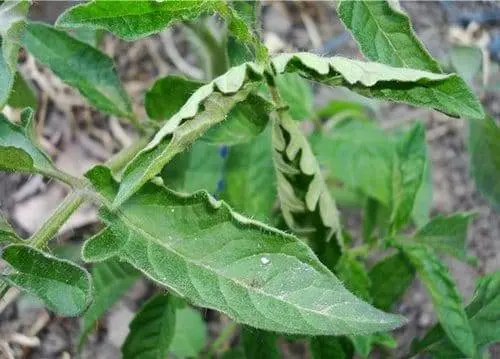
There are a lot of reasons why the leaves of tomato seedlings can twist. To make it easier to find a solution to the problem, we decided to group all the reasons according to the method of occurrence:
- characteristics of the variety and environment;
- non-compliance with the conditions for growing tomatoes;
- seedling disease and pest damage.
The first two problems are easier to solve. They can even be prevented by frequent monitoring of tomato seedlings. Moreover, it is desirable to pay attention to plants not only during the day, but at least once at night. Timely corrected agrotechnological errors will help restore tomato seedlings to their previous appearance.
The third problem is the most difficult. And, if it is still possible to fight pests somehow, then tomato seedlings may not have time to be saved from many diseases. Most often, tomatoes are affected by bacterial diseases due to the fault of the gardener. This is due to the unwillingness to take preventive measures. Agrotechnology for growing tomato seedlings provides for the disinfection of seeds, soil and planting containers. Some gardeners simplify this process. They suggest that it is enough just to pickle the seeds of tomatoes. Then they say that last year’s seedlings grew good, and this year is unsuccessful due to some natural disasters. In this case, nature has nothing to do with it, there is simply a non-compliance with the agricultural technology for growing tomatoes.
Features of the variety and environment
Tomato leaves are very sensitive to environmental conditions. If you watch them, you can see how they react to drought, waterlogging, heat, cold, drafts. The shape of the leaves speaks of unpleasant environmental conditions for the tomato. If something is wrong, they begin to curl. Moreover, the sheet does not necessarily take the form of a tube. It can be in the form of a boat or, in general, bent only in certain areas. Interestingly, the tomato leaf is able to twist the leaf blade in and out.
Varieties of tomatoes characterized by twisted foliage

When growing tomato seedlings at home, it is advisable to study the characteristics of each variety even at the stage of acquiring seeds. In the future, this will help to avoid panic when the grower sees tomatoes with twisted leaves. The fact is that this form of foliage may simply be a characteristic of a particular variety of tomato. This is most often seen in indeterminate tomatoes. In many cultures, thin stems can be observed, covered with hanging narrow carved foliage. By their nature, such tomato leaves themselves can curl slightly. This is not a seedling disease, and you should not immediately rush to treat tomatoes with different preparations.
Take, for example, several popular varieties: Fatima and Honey Drop. In these tomatoes, from the moment the seedlings were grown, one can observe a slight twisting of the foliage. A prime example would be most varieties of cherry tomatoes. It is almost impossible to imagine this plant with perfectly even foliage. During the planting of tomatoes, it is necessary to examine the appearance of the seedlings. If one variety has thin foliage slightly twisted, while neighboring tomatoes of another variety have smooth and even leaves, do not worry. These are just the characteristics of the variety. When the disease manifests itself, it affects all tomato seedlings growing near.
The effect of heat on the shape of a tomato leaf
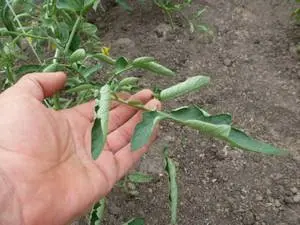
An observant person has probably seen more than once how the foliage of many plants and even trees curls in hot, dry weather. This is especially evident when a hot wind blows outside. Tomato is no exception. When the heat sets in, its leaves immediately become like tubules. And this is all because the plant is trying to reduce the evaporation of moisture. A sheet twisted into a tube reduces its area and becomes thicker, which means that it warms up less under the sun’s rays. It is interesting to watch such tomatoes in the evening. As soon as coolness sets in, the leaves all straighten out, become even and smooth. They prepared to replenish their water balance by soaking up the morning dew. When the sun rises and the heat sets in, the tomato leaves will take on the traditional tube shape.
However, it is necessary not only to observe such a natural phenomenon, but also to help the tomatoes survive the heat. First of all, growing tomatoes need to organize shading. It is best to do this with white agrofibre. Lightweight material will hold on to any wire structure, but they need to cover the tomatoes only from above. From below, fresh air must flow along the ground, otherwise the plants will simply become steamed.
Drops of water on the leaves take on the effect of a lens that promotes the formation of burns. Under the hot sun, moisture evaporates from under the root, and settles on the sheets with the same microdrops of water. The effect is the same.
During such weather, it is impossible to water the above-ground part by sprinkling in the morning and evening hours. After several such refreshing sprays, late blight damage to tomatoes is guaranteed. When hot days are set on the street, it is necessary to fluff the soil under the tomato seedlings more often. You can even mow forest grass and cover the ground around the stems of tomatoes. The herbal pillow will reduce the evaporation of moisture from the soil, plus it will prevent the tomato root system from overheating.
Influence on the shape of the sheet of lack of moisture

Lack of moisture is a natural cause of tomato leaf curl. Some summer residents rarely appear on their plots, someone hopes for rain, but it’s a shame when a person diligently waters, but the plant still has little water. The reason lies in the most improper watering. Sometimes the vegetable grower is afraid of soil silting, and waters the tomatoes often, but in small portions of water. To understand the incorrectness of such watering, you can analyze the structure of the tomato root system. A small portion of water is able to penetrate deep into the soil up to 5 cm, where there may be a small amount of the upper roots of the plant, or maybe they may not be there at all. The main root of the tomato is located deeper and moisture simply does not reach it.
Adult plants on mulched beds are watered every five days, and on uncovered beds – after two days. Moreover, if an ovary has already appeared on the bush, the tomato needs at least a bucket of water.
Influence on the shape of the leaf moisture supersaturation

Oversaturation with moisture can be determined by twisted up tomato leaves. If the problem arose from frequent watering, it is easy to solve. But what to do in a rainy summer? After all, man is incapable of regulating precipitation. Even from the moment of planting seedlings of tomatoes, it is necessary to take care of the preparation of loose soil in the garden. Dense soils poorly absorb water, and with frequent rains it will stagnate under the plants. The roots of tomatoes will not be able to get the required amount of oxygen, they will begin to rot and all plantings will disappear over time. If, nevertheless, the soil has not been prepared correctly, it is necessary at least to make drainage grooves from the bushes. Through them, rainwater will go to the side.
Failure to comply with the conditions for growing tomatoes
Tomato agrotechnology provides for the application of various fertilizers that stimulate growth, flowering and ovary formation. This also includes pinching tomatoes. Basically, this process is necessary for indeterminate and semi-determinate tomatoes. Violation of one of these processes affects the twisting of the leaves of seedlings and adult plants.
Excess fertilizer
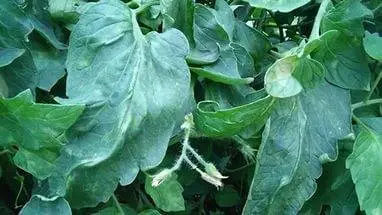
Tomato seedlings begin to be fed from the first days of her life and ending with adult plants on which the ovary has already appeared. But everything is good in moderation. Each top dressing of a tomato is based on the application of a certain type of fertilizer. For example, from an excess of nitrogen, tomato leaves roll up into a ring. The leaves become fleshy, brittle, and when lightly touched by the hand, they immediately burst. And it’s not just saltpeter or urea. A lot of nitrogen is found in bird droppings, manure, and even in some decoctions of herbs, which caring housewives often like to add tomatoes to.
Excess nitrogen prevents the entry of phosphorus into the tomato, but at the same time, potassium may not be enough. Then phosphorus will not enter the aerial part of the tomato. You can even out the balance and save the seedlings from excess nitrogen by applying phosphorus and potash fertilizers. If the soil contains a sufficient amount of phosphorus, you can only get by with potassium fertilization.
Even an inexperienced vegetable grower can be sure that he will not harm his tomato seedlings. However, even complex fertilizers must be applied according to the instructions on the package.
Nutrient deficiency
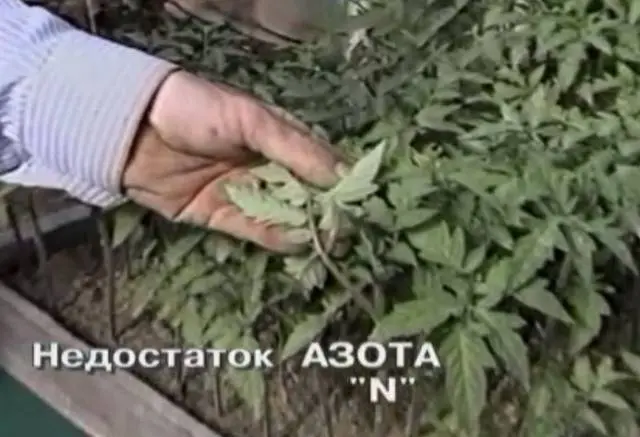
Properly prepared soil should contain the necessary amount of nutrients, which is enough to grow tomato seedlings without top dressing. Although many vegetable growers still feed the plants several times before and after picking. Most often, there is a lack of phosphorus in seedlings, especially before planting them in the ground. This can be determined by folded leaves with a purple hue.
If the leaf folds from the lateral edges to the longitudinal vein, then the seedlings are deficient in potassium. From a distance, such a plant resembles a curly bush. You can solve the problem by adding wood ash, superphosphate or potassium nitrate to the soil.
Micronutrient imbalance
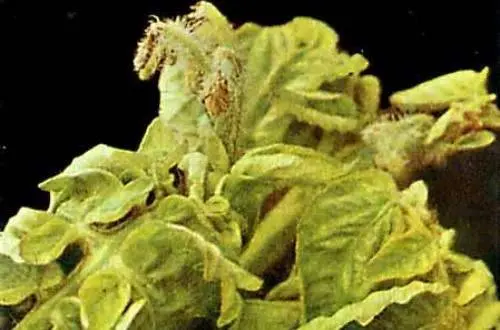
Tomato is such a sensitive crop that it reacts even to a lack of trace elements. The leaves immediately change their color, the edges are slightly bent and can curl over time.
The imbalance of boron is manifested by the twisting of tomato leaves on the middle tier of the bush. Initially, the veins of the leaves become red, after which the entire bush turns yellow or becomes pale.
Young leaves of tomato seedlings react strongly to a lack of copper. At first, their edges begin to twist slightly towards the longitudinal vein. If at this stage fertilizing with a copper-containing substance is not done, the foliage acquires an autumn yellowness, gradually becomes dry and crumbles.
Both components are in good contact with each other, which increases their effectiveness.
Excess zinc immediately affects old tomato leaves. Their back side becomes purple, and the side edges are folded into a half ring. Zinc deficiency is determined by young tomato leaves. They become brittle, and the side edges are bent with a tube into the back of the sheet.
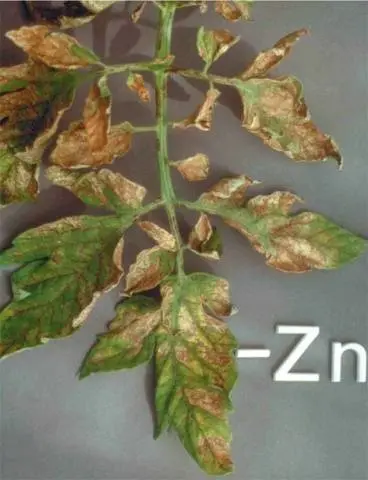
Calcium deficiency can be identified by pale tomato leaves. In addition, their edges will begin to wrap up a little.
It should be noted that according to such signs it is difficult to determine even for experienced vegetable growers which microelement is not enough for tomato seedlings. If this has already happened, it is better to feed with complex micronutrient fertilizers.
Incorrect removal of stepchildren
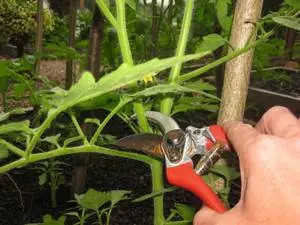
Pasynkovanie brings a certain stress to the tomato. There are rules that require stepchildren to be removed when they reach a maximum length of 7 cm. If this is done later or all the vegetative parts are pinned at once, the stress reaction will be twisting the tomato leaves into a funnel. It is necessary to act immediately, otherwise all the inflorescences will be showered next. Here, only top dressing by spraying the aerial part will save the plants. The harvest, of course, will be smaller, but better than nothing.
Seedling disease and pest damage
Infectious diseases and pests cause the most irreparable damage to tomato seedlings. Sometimes it is possible to save the plants, although it will be possible to forget about a good harvest.
Manifestation of bacteriosis
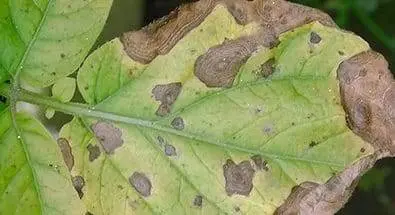
Most often, the grower himself is to blame for this disease of tomatoes. Bacteriosis multiplies due to the reluctance to pickle tomato seeds before planting. The disease appears on the leaves of young seedlings. They begin to curl outward and become small. On fruiting tomatoes, bacteriosis changes the color of the flower from yellow to white. Affected tomato bushes slow down growth. At the top of the plant, the leaves become faded and curl. It is impossible to cure such a tomato. The bush must be removed, and all other plants are treated with pesticides, as scoops, aphids and whiteflies spread bacteriosis.
The manifestation of Fusarium wilt
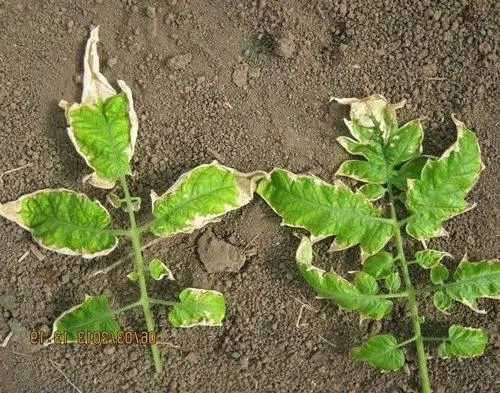
This disease is considered fungal. It develops in poor soil, therefore it spreads through the plant from the bottom up. The defeat of the tomato bush begins with the leaves of the lower tier. A noticed such a tomato is immediately removed, and the soil where it grew is treated with a thick solution of potassium permanganate. All nearby growing tomatoes are sprayed with a biofungicide or any other similar preparation.
Tomato damage by garden pests

Aphids, red spider mites and whiteflies cause irreparable damage to cultivated plants. Tomatoes, these pests are not very fond of, but sometimes their settlements are found on the back of the leaves. The vital activity of pests is based on sucking the juice from the plant, as a result of which the weakened tomato leaf curls inward and turns brown-yellow. To combat pests, decoctions of onion peel, celandine are used, sometimes an infusion of wood ash helps. There are many store-bought drugs, but they must be used carefully. Tomatoes tend to accumulate harmful substances in themselves.
Thin-leaved virus infection
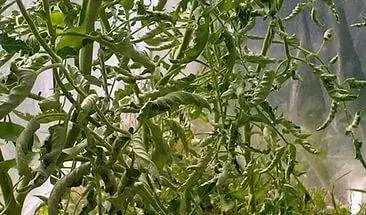
Usually, the manifestation of the virus is observed in dry summers and with strong lighting inside the greenhouse. Tomatoes do not die, but the leaves become twisted into a thin tube. The fruits are tied small, wrinkled. Tomatoes can be saved by spraying the foliage with a solution of potassium permanganate with urea. With unsuccessful results, it is better to remove the affected tomato bushes.
Conclusion
Video about why tomato leaves curl:
Determining the actual cause of tomato leaf curl is quite difficult. If the measures taken to save the plant did not give positive results, such a tomato must be removed from the garden, otherwise you can be completely left without a crop.









